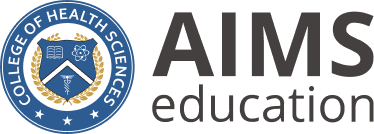How to Get Your Cardiac Monitor Technician Certification
December 5, 2019
After careful consideration, you’ve decided to join an allied health career as a cardiac monitor tech (also known as an EKG technician and cardiographic technician).
Whether you’re already working in allied healthcare – or are just starting out in the industry – you know that you want to make a difference in the lives of others. Now that you’ve narrowed down your decision, you’ll need to enroll in a cardiac monitor tech training course.
Though each program has slightly different guidelines, this step-by-step guide should be a great starting point!
1. Choose Your Cardiac Monitor Tech School

Photo by Andrea Piacquadio from Pexels
For students to succeed, they need to find the right program and location. If you’re going to be working a part-time job, it’s a good idea to choose a campus that’s close to home or work. That said, many students move to other cities or states to pursue their education.
If you live in an area with multiple cardiac monitor technician programs, go visit some campuses to see if you click with the facilities.
Discuss Your Options with an Admissions Expert
If you want to learn about application and enrollment processes, a school representative will be your most important contact. Before your campus visit, schedule an appointment to discuss your prior academic performance and educational goals as a CMT student. Ask about course structures and whether financial aid opportunities are available.
2. Determine Your Payment Options
While federal financial aid is not available for most cardiac monitor tech training programs, that doesn’t mean other options aren’t available. Depending on your situation, you might qualify for private loans or scholarships, and some schools offer interest-free payment plans.
- Apply to a Cardiac Monitor Technician Program

Photo by Kamille Sampaio from Pexels
Once you determine your payment plan, it’s time to turn in your school application. Many training programs have rolling admissions, which allow prospective students to enroll as soon as course start dates are posted on the school website.
Though plenty of schools allow their students to apply via the internet, some require campus visits to ensure that forms are completed properly. CMT training programs may also request that prospective students interview with department heads and pass an entrance exam (e.g. Wonderlic SLE, Accuplacer, etc.).
You may be accepted into your CMT program the same day you apply, so be prepared to sign an enrollment agreement and any other admission documents. If you don’t hear back immediately, don’t worry: You should have your answer within a few weeks.
Why Is an Entrance Exam Important?
The Wonderlic, Accuplacer, and other entrance exams are great ways to measure an applicant’s competence. Will you be able to keep up with coursework fundamentals? Are you able to retain vital information? The goal of these exams is to see if students will succeed in their classes.
4. Attend Orientation
Orientation helps students start their cardiac monitor tech classes on the right foot. This is the perfect time to clear up any confusion about school policies and procedures by asking administrators and professors any remaining questions.
5. Complete Your Cardiac Monitor Tech Training

Photo by Jair Lázaro on Unsplash
In cardiac monitor tech training, students will study a wide variety of tasks like monitoring EKG machines, performing 12-Lead and 15-Lead EKGs, understanding EKG/ECG readouts, and ambulatory monitoring. Trainees will also study anatomy and physiology, as well as patient care and safety.
To gain hands-on experience with crucial tests (e.g. EKG/ECG, stress testing, Holter monitoring), students will be placed with an experienced mentor in clinical internships. This real-world education will help prepare students for everything their future career throws their way.
6. Pass Your Certification Exam
After completing your cardiac monitor training program, you’ll be eligible to sit for the CCT certification exam to earn your Certified Cardiographic Technician credential, as well as the CRAT certification exam to earn your Certified Rhythm Analysis Technician credential. Both exams are offered by Cardiovascular Credentialing International (CCI).
Start Your CMT Career Today
After completing a quick allied health training and certification exam, qualified cardiac monitor techs be able to work in clinics, hospitals, nursing homes, and more. If you’re interested in learning more about the AIMS Education cardiographic technician program, don’t hesitate to contact one of our admissions representatives.

